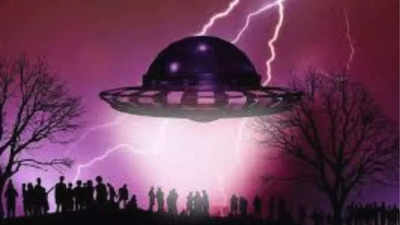- News
- Science News
- NASA’s asteroid sample could be the ultimate proof of aliens existence
NASA’s asteroid sample could be the ultimate proof of aliens existence
NASA's latest asteroid sample from Bennu reveals amino acids and nucleobases, essential for life, sparking questions about extraterrestrial existence. These findings suggest life's building blocks are more widespread in the solar system than previously believed. This groundbreaking discovery challenges our understanding of life's origins and whether Earth is unique in hosting life.
For decades, scientists have scoured the cosmos for signs of life beyond Earth—but what if the answer has been hiding in plain sight? NASA's latest asteroid sample, retrieved from deep space, has left researchers stunned, igniting speculation that we may not be alone. The findings, shrouded in secrecy until now, could challenge everything we thought we knew about our place in the universe.
Is this the breakthrough humanity has been waiting for? Or is there something NASA isn't telling us? As whispers of extraterrestrial evidence grow louder, experts are racing to uncover the truth. One thing is certain—this discovery has the potential to change history. Stay tuned, because what NASA just found might be bigger than anyone imagined.
Life beyond Earth? NASA’s shocking asteroid findings raise big questions
Published in the journal Nature, and its offspring, Nature Astronomy, these research findings do not confirm extraterrestrial life; however, it does suggest that the building blocks necessary for this type of life were far more widespread than researchers previously believed. This raises an ominous question: If Earth was not unique in its conditions, could life have developed elsewhere-on a distant planet or a hidden moon?
NASA’s asteroid discovery may prove life didn’t start on Earth—it came from space
NASA’s latest asteroid discovery has sent shockwaves through the scientific world. The Bennu samples, delivered by the OSIRIS-REx mission, contain something astonishing, 14 of the 20 amino acids life on Earth uses to build proteins and all five nucleobases found in DNA and RNA. These are the very blueprints of life itself.
Even more shocking, scientists detected high levels of ammonia and formaldehyde—key ingredients that, under the right conditions, could spark the formation of complex molecules. Could these compounds have seeded life not just on Earth, but across the solar system?
While traces of these building blocks have been found in meteorites before, never has such a pristine sample been studied directly from space. “The clues we’re finding are incredibly fragile and could never survive Earth’s contamination,” said NASA’s Danny Glavin. The question now looms larger than ever, was life’s origin an Earthly miracle, or something far more cosmic?
Are left-handed amino acids the key to life? NASA’s Bennu asteroid sparks new mysteries
NASA's new discovery from the Bennu asteroid opens a new chapter in its search for life beyond Earth. The samples brought from the asteroid, rich in amino acids and other elements required to build life, indicate that the raw material for life is much more widely distributed in the solar system than we thought so far. There is, however, a curious anomaly that stumps scientists: the Bennu samples contain just the right proportion of left-handed and right-handed amino acids. It uses only the left-handed variety on Earth. Why does the universe prefer "left"?
"This adds major strokes to the picture of a solar system brimming with life potential," said NASA's Jason Dworkin. But the real question is far deeper—if life could arise anywhere, why have we yet to find it elsewhere? The answers may lie in this baffling mystery, leaving us to wonder: Could life's origins be more universal—and more complex—than we ever imagined?
Also Read: "I've been trying to remember what it's like to walk...": Sunita Williams struggles to walk after 7 months in space; here’s what it means for astronauts
End of Article
FOLLOW US ON SOCIAL MEDIA


